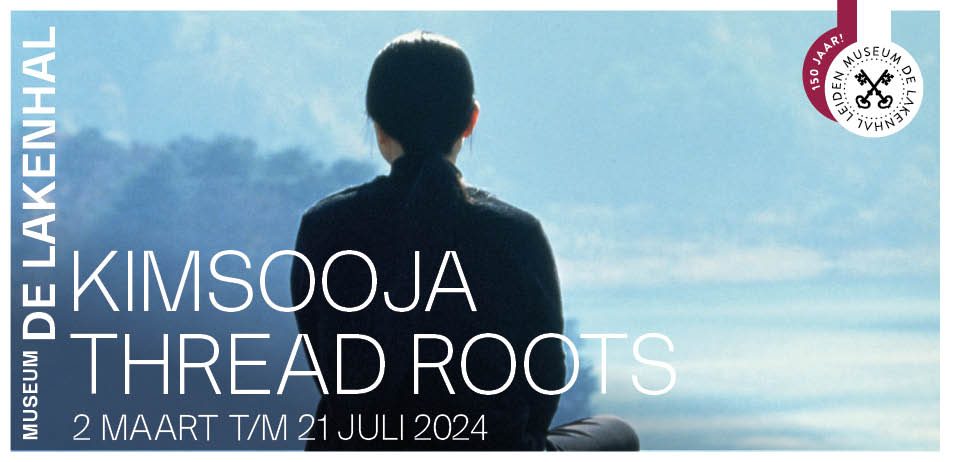Before and After Censorship
A panel talk took place this summer at the Balie in Amsterdam under the title “Before and After Censorship,” organized by De Appel’s curator-education program. International artists mostly discussed censorship as consisting of far-flung, exotic incidents, never hitting too close to home.
This summer, an event organized by the Appel arts center of Amsterdam took place at the cornerstone Amsterdam venue De Balie, featuring a round-table lecture on censorship provided by three international artists (Galit Eilat from Israel, Sabina Sabolovic from former Yugoslavia, and Federico Zukerfeld and Loreto Guzman from Argentina) with the moderation provided by Lorenzo Benedetti, current director of De Appel. Speakers were hand-picked by Renata Cervetto, an Argentinian curator freshly graduated from De Appel’s curatorial program.
The first speaker was a duo, Federico Zuckerfeld and his wife Loreto Guzman, of the artist’s group Etcetera. Federico and Loreto gave a eulogy to their friend and mentor, Argentinian artist and art world legend Leon Ferrari. The entertaining, intelligent and funny Federico, who seemed to have tried forms of liquor indigenous to the Netherlands before the show, gave an exhilarated presentation with slideshows to illustrate for us the story of how the Argentinian artist legend Leon Ferrari, in his old age, had a face-off with the Vatican.

Leon Ferrari’s most famous exhibition (or his infamous, if one asks a proud Argentinian Catholic) took place in the cultural center of Buenos Aires’ Recoleta neighbourhood. Recoleta, as Loreto bitterly pointed out, is the home of the nouveau riche and the high and mighty, despite that the cultural center offers free-of-charge entry. The Recoleta cultural center’s building is also adjacent to an 18th-century Catholic church (by no error, as part of the Recoleta nouveau-riche identity is known to be one of Catholic piety.) But it was not until an Evangelical church-member working as a cleaning woman in the cultural center saw Leon Ferrari’s collage, depicting Jesus Christ crucified on an F-16 war-plane, that scandal erupted. The cleaner took pictures and swiftly alerted religious communities and tabloid media. Eventually the Catholic diocese, then in the parish of none other than Bergoglio, caught wind. Media-storms unleashed concerning the subject of blasphemy and the presence of Ferrari’s Christ-on-a-jetplane in a building next to a Catholic Church. Large demonstrations by Catholics as well as Bergoglio’s attempts to have the artist, then in his late 70s, decant the sin of blasphemy on national television talk-shows led to an even larger presence of supporters protesting Ferrari’s right to blaspheme. After a year of scandal-mongering and debate about religion, led Ferrari to his long-awaited and long-deserved fame (‘’And here is Leon looking like a rock-star!” Federico said fondly while presenting slides of the white-haired, bespectacled artist standing before the crowds of onlookers opposing the Inquisition)
Zuckerfeld also recounted the day he and Gabriela needed to tell him the news, in 2013, as to who among Argentine clergy had just attained beatification. After a long silence and some heaving, Leon, according to Zuckerfeld, asked them to open a bottle of wine and to bring him his cigarettes, in order to toast to his enemy. Though enemies, Francisco and Ferrari may have turned out, unintentionally, to be each other’s greatest accidental allies. Venice awarded Leon’s notoriety, provided him the Golden Leon. And the Vatican seemed to have appreciated Bergoglio’s standing up to the artist to protect the sanctities.
Ferrari died in 2013 in his native Buenos Aires. When Federico gave his presentation, the modern art museum Macba in Buenos Aires was still showing the Leon Ferrari Retrospective. The show featured Ferrari’s collages and experiments in the form called ‘’Asemic writing’’, forms of nonsensical script that resemble a foreign alphabet or a musical system of notes but actually are pure abstractions without any formal language or meaning.
Before the intermission, Zuckerman and Loreto announced a petition they had contrived: a letter to the Vatican asking for the Abolition of Hell. The abolition of hell was a cause that deeply concerned Leon Ferrari as well.
I refused to sign the petition when offered me, much to their consternation. But I am a poet by profession. Why would a poet want the abolition of that realm he holds most dear? It would not merely be a shame, the abolition of hell and its demonic bureaucracy sounds like a neoliberal reform and sanitization.
In the Argentinian conundrum, it seemed clear that the brouhaha remained at the believers, who at times made threats; the museum establishment itself never for a moment buckled to the pressure of activists.
An entirely different scenario was mentioned by Zuckerfeld’s co-panelist, Sabina Sobolovic: in Madrid in 2014, Spanish Catholic activists in an NGO for religious people’s rights insisted that an installation be removed for its offensiveness to Catholic dogma: the art exhibit showed ‘’Cajita de Fosforos’’ “Match-box’’, a propaganda poster of the anarchists from the Spanish civil war, showing a church on fire and the maxim “The church that best illuminates is a church burning down’’ (la iglesia que major ilumina es la iglesia que quema).
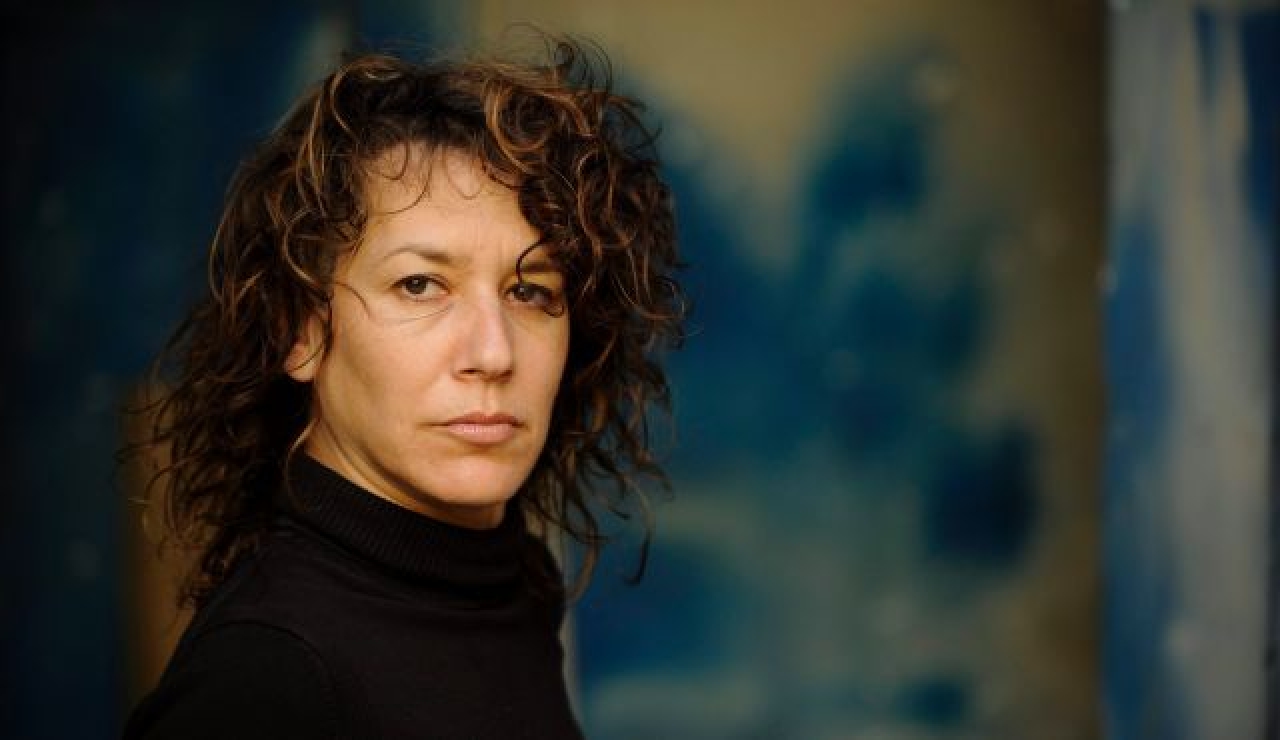
Galit Eilat, an Israeli artist, sees a fostering, growing conservatism in the art world. At biennales and festivals, there is a new form of discipline. Not offending the public morality seems to be ever the preoccupation of festival organizers and artists, even though the ironically express a position of vanguardism or civic activism.
Interesting enough, but Eilat’s talk then changed from this very important and insufficiently discussed reality to focus on her support for activists who declare a boycott of Israeli art shows. She is not for censoring Israeli artists—Eilat is an Israeli artist who left Israel and she does not want her government representing her. Eilat, agreeing with the boycott’s financial logic, insists that Israeli foundations for the arts must play no role in art installations at international shows.
She was involved in a boycott rally was attempted at Sao Paolo’s Biennale. But Brazilian artists asked “Why should we concern ourselves with the children in Gaza in Palestine, when we have the conflict and poverty of the favelas, slums on the city outskirts that murder children every day?”
Despite the reasoning of Brazilian art-involved activists to be local and not globally involved in Israel-Palestine, there were sit-ins at the Sao Paolo biennale in the name of Gaza, as well as a confrontation and shaming of the artists and venues who accepted Israeli funding.
Towards the end of Galit’s lecture, she again defended the case of cultural boycotts by activists and by international, charity-pontificating art world celebrities, towards the exclusion Israeli artists and Israeli academics who would be able to appear on their playing turf of prestigious festivals thanks to money from Israeli funds.
Such financially-minded censorship activism in the cultural world has often caused last-minute withdrawals of boycotted films, exhibits and music shows. Many a festival director today seems concerned for blackening his, or her name with welcoming Israeli art (though there is no such discussion about boycotting North American or British art shows on grounds of imperialism.) Cancellations ensue at European and American festivals when a weak-stomached festival director fears meeting toe to toe with the NGOs or from MFA-graduates turned picketer-activists who threaten to cause disruptions and to blacklist curators for hosting any artist or production that received money from an Israeli foundation.
Eilat insists the boycott actions are not at all aimed at censoring Israeli artists. She defends activists –even though the typical BDS activist will say disparagingly that any art from Israel is a ‘’candy wrapping’’, ‘’propaganda’’ intentioned to sell ‘’brand Israel’’ while distracting the Westerners from the ethnic cleansing carried out by what is, undoubtedly, the most extreme government in the history of her young state. Israeli Minister of Culture, Madam Miri Regev, is no exception: known to censor, blacklist, wire-tap and persecute Israeli and Palestinian artists within Israel. But Miri Regev was not mentioned during the talk.
The prominence of the cultural boycott has been exploited in Israel by the Netanyahu administration, whose cultural minister Regev seems to enact as her sole duties that of cutting the budget for art and persecuting ”un-patriotic” artists who are no longer useful to Israeli image-making abroad as they cannot tour thanks to the boycott.
Galit Eilat, member of the burgeoning community of Israelis who left her country as an act of protest and admission of Israeli collective guilt, says the cultural boycott is only concerned with matters of “Representation.” “Representation’’ seems one of the postmodern jargon-words along with ‘’narratives’’ and ‘’signifiers’’ ‘’image-making’’ and so forth, currently in vogue and in overuse by artists as well as amidst the rank and file of a young, militant academia that seems growingly ever-fond of censorship and seems incapable of doing real politics that might affect socio-economic relations of power.
Sabina Sabolovic, the Serbian artist, spoke of an incident with an exhibit at the Moscow state museum involving the artist collective “What is to be done?” which includes herself and another Amsterdam native, Glukya Pereshina, (originally from St Petersburg, represented at Akinci Gallery Amsterdam, while having known exhibition at Hermitage Amsterdam, co-division of the St Petersburg Hermitage.) The director of the Moscow museum allowed the artist collective “What is to be done?” to exhibit but then requested that a statue of a Russian soldier with the head of a pig be covered by a paper bag, as it offends the national Russian Spirit and sentiment.
This comical and grotesque incident seems a more archaic form of censorship than the more current day phenomena within the West, such as what Sabina referred to as the ‘’political correctness’’ that was first introduced, and institutionally grafted onto the culture of former-Yugoslavia as condition to their EU membership. According to her and other Yugoslav intellectuals of note, such Western capitalist tenets such as political correctness, institutionalized politeness about ethnic or gender differences and a general spirit of leveling mediocracy in public education, all proved a disastrous experiment in their culture. (The Slovenian-pop scholar Slavoj Zizek even went so far to imply that the prohibition of humor about ethnic identities led to the upsurge in violence and the Milosevic years) Certainly the recent cultural transformations in former Yugoslavia have damaged artistic and literary freedom—but before Sabina could go on she was reminded to focus on the topic of her experience in Russia.
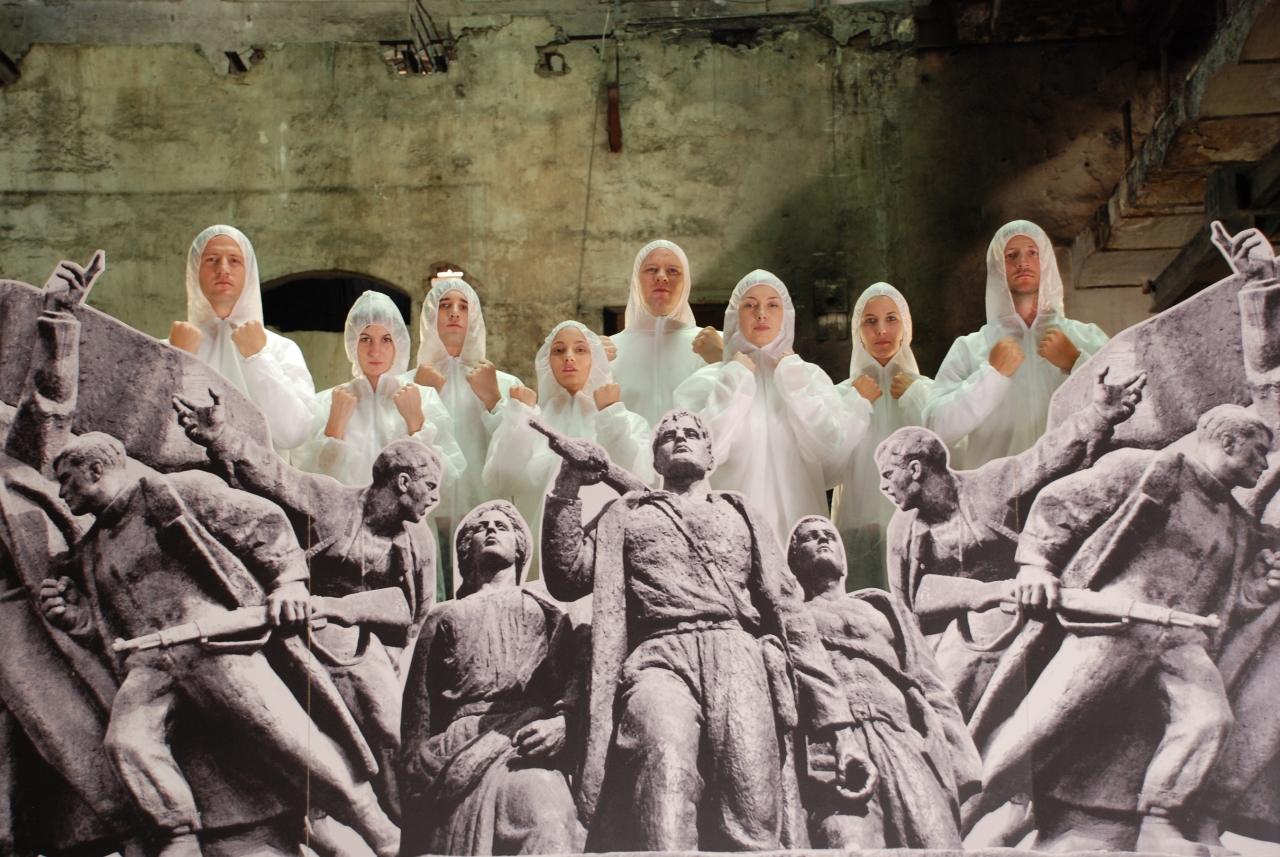
The group “What is to be done?” (“Что делать?” or Shto Dlelat) takes its name from the famous pamphlet by Lenin, who borrowed from the Russian novelist Chernyshevsky, who was inspired by Tolstoy’s pamphlet “What must be Done?” The collective believes that art must by all means have a participatory intonation, and as member Pereshina noted at her presentation in a Bijlmer Amsterdam cultural center, “after the fall of the Welfare State, we artists must come to the realization that bygone era’s mistakes cannot repeat itself: art can no longer be hermetic” she says with a resigned tone of admitting collective guilt, as well as relief. Participation has of course become a mantra of the conservative and neoliberal governments in Northern Europe, who often insist that artists applying for funding demonstrate their project has a ”participatory” function. Oddly, the most liberal constituency in Europe, that of the cultural world, underneath its radical and dogmatic gestures has found a consensus with a right wing leadership that proves itself again and again hostile to the arts.
None of the artists on the panel discussed how a children’s rights advocacy group and NGO in Italy succeeded in buckling a museum director into shutting down an offending morbid installation by the Chapman brothers.
And what about the show Mosque in the Icelandic section of the Venice Biennale? The recreation of a Mosque inside the old Church of Maria di la Misericordia was removed and shut down due to complaint or hyped up, exaggerated ‘’security’’ fear, though in all likelihood the Italian police was directly trying to shut down what they thought to be an actual mosque—perhaps a sign of the success of Christoph Bruchel who is known to create hyperrealist imitations of interiors. Of course then, opening a quasi-real mosque in Europe acquires the attention of the police.
More dramatic was what happened next door, the Syrian film “All the Syria’s Futures” was at last minute, after acceptance, not shown by the Biennale. When the censored film was eerily long-listed with an honourable mention by the festival, the Syrian film-makers’ group Abounaddara sent a letter objecting to the longlisting, as how could it receive any honourable mention from the same festival coordinator who censored them? These are all preponderant and dire questions that the art world today, in its frenzy of self-congratulation for taking up liberal and social postures, seems incapable of hearing.
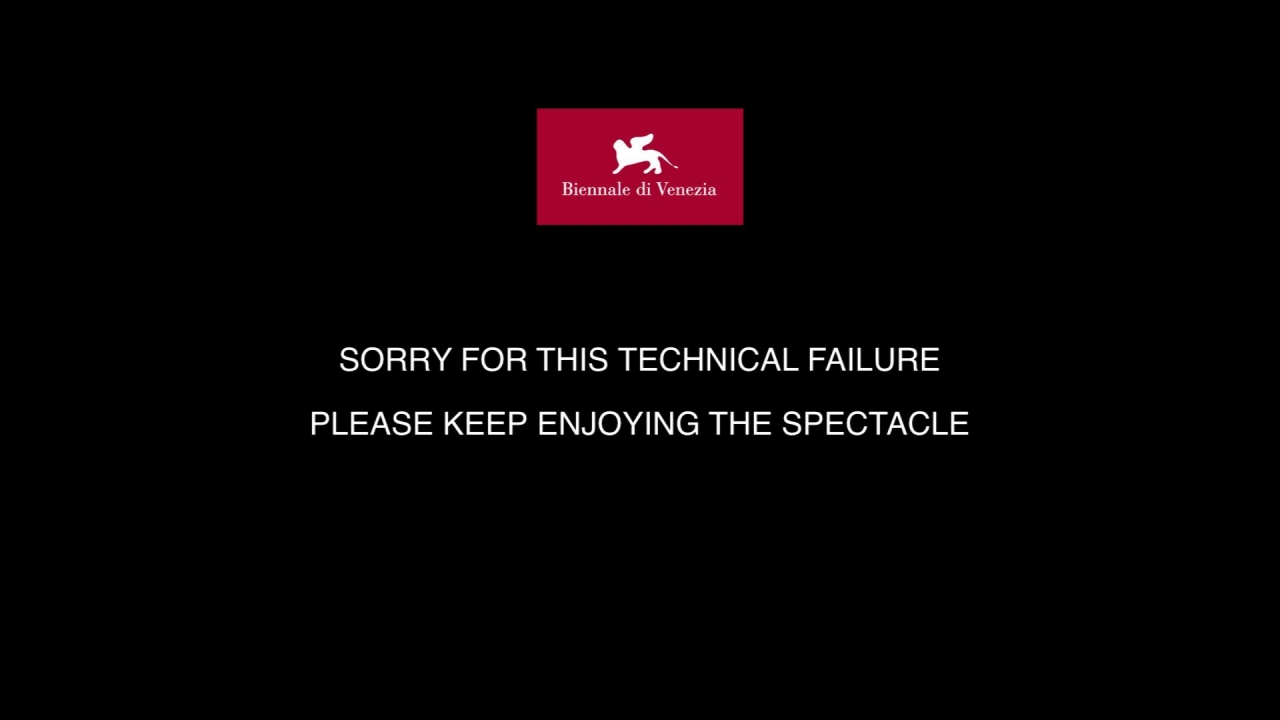
There were many interesting turning points of discussion. However, discussion remained limited to political discussions on cultural freedom outside of the art world’s market centers in the United States and Europe and instead mostly concerned events at the Sao Paolo biennale, or Israel, Argentina and a Putinist museum director in Russia. A discussion on censorship in Amsterdam, chaired by the new director of the Appel arts center, seemed to entirely skip the abundant cases of censorship that have become a norm in recent years in Europe and North America. There are the cases of the Syrian film and the Norwegian ‘’mosque’’ at the biennale as well the Chapman brothers; but the phenomenon plumbs further, also penetrating the literary world of the United States, where the hyper-competitive atmosphere amongst writers graduated from American Master’s of Fine Arts programs has led to the normalization of artists and writers calling to censor other artists and writers on charges of political sins, real or imagined sexism and racism.
Exhibit B by South African artist Brett Bailey was shut down in London and in Paris after efforts by the British artist-vigilante Sara Myers who saw fire. Barbican pulled the show after a petition with 23.000 signatories stated it to be ‘’an exercise in white privilege” despite that the show included mostly black South African dancers and Namibian black singers choreographed by the white African. Myers insisted that a show recreating the historical exploitation of South Africans who were used by the Piccadilly circus in the 19th century should be removed and censored because her ‘’children don’t need to know about all these barbaric horrors in history and deserve better.” The colonial elites in 19th century Europe might have expressed similar objections and hang-ups when a confrontational activist or artist in prophetically tried to tell the European public about the atrocities perpetuated by overseas colonialism in the colonial hey-day.
Activists in London and Paris latched on to the battle because the artist curating the show is a white South African. Third generation Parisian descendants of immigrants from Camerun said ‘’’ touche pas mon histoire’’ It was cruel irony to ignore that a white South African in 2015 shares the history of the recently democratic, post-apartheid country and has every reason to explore and exhibit the history of the country on which his ancestors left their indelible mark.
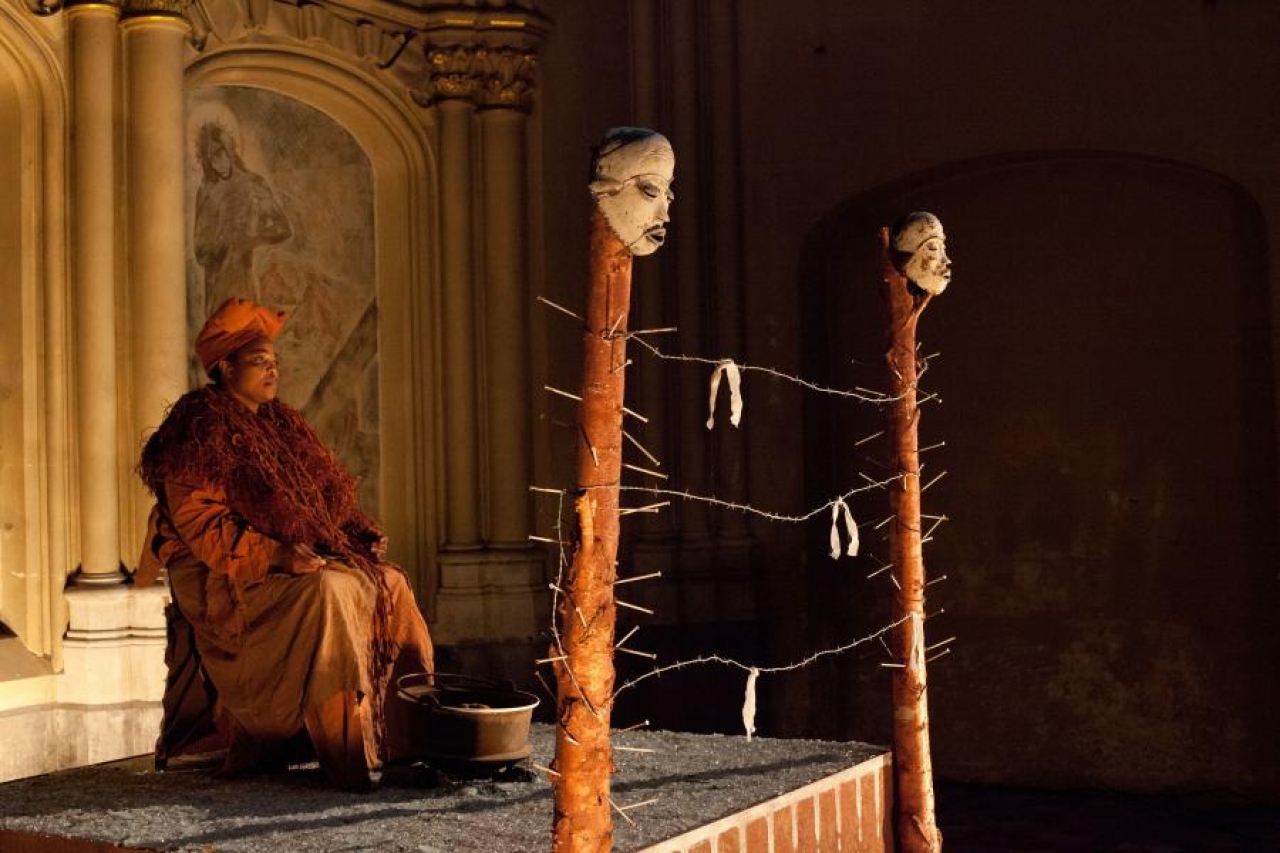
The cultural boycott by BDS activists, defended by Galit from the best of her intentions, is undoubtedly a signature of this time in which artists directly rush to exclude and censor other artists while manipulating political causes of oppressed minorities. At events like the Sao Paolo Biennale, art is harnessed into becoming a form of post-political activism that attenuates and coerces artistic depictions. The coercion often results in absurd posture that falls flat. They have shown the limits and the inability of many up-scale artists, despite their utmost intentions, to directly prove useful in purposes of lobbying and policy-making. And the politicized art carnival has proceeded most unlike a carnival. Despite its spectacle and its mass-mobilization, it has carried own cleanliness, and politely, pandering to the respected and respectable, and never getting one’s hands begrimed with actual party politics that might effectively serve the interests of the oppressed, of the poor, of the systematically excluded, of the murdered sea-swallowed immigrants.

